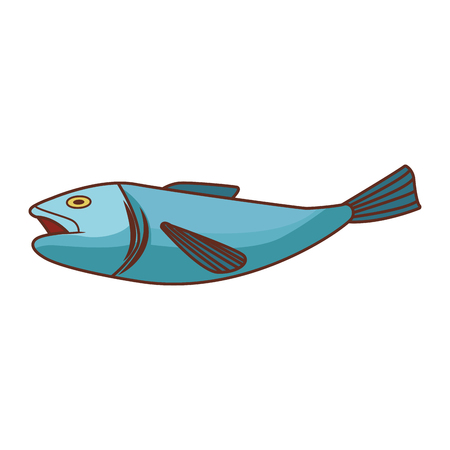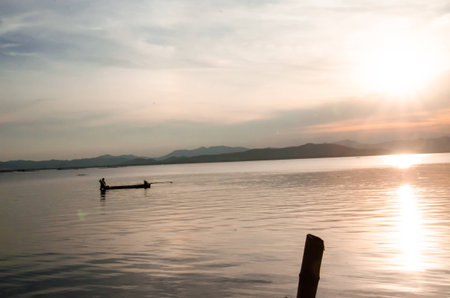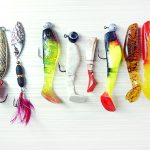What is Flatline Trolling?
If you’ve spent any time around American anglers or watched a few fishing shows, you’ve probably heard the term “flatline trolling.” But what exactly does it mean, and how is it different from other trolling techniques?
Understanding Flatline Trolling
Flatline trolling is a simple yet highly effective fishing method. At its core, it involves running fishing lines directly off the back of the boat, without using any extra gear like planer boards or downriggers to spread the lines out or get them deeper. The name “flatline” comes from the fact that the line runs straight (or flat) from your rod tip into the water, following the boat’s path.
How Flatline Trolling Stands Out
| Technique | Main Gear Used | Line Placement | Typical Target Species |
|---|---|---|---|
| Flatline Trolling | Rod & Reel Only | Straight off stern, no extra devices | Bass, Walleye, Trout, Stripers, Mackerel |
| Downrigger Trolling | Rod, Reel & Downrigger | Weighted line to fish deep waters | Salmon, Lake Trout |
| Planer Board Trolling | Rod, Reel & Planer Boards | Spread lines out to side of boat | Pike, Musky, Walleye |
The big advantage with flatlining is its simplicity. You don’t need fancy equipment—just your rod and reel. It’s perfect for targeting fish that are feeding near the surface or just below it. American anglers love this approach because it works in lakes, rivers, and coastal waters, making it super versatile for species like bass, walleye, stripers, and even mackerel offshore.
When Do Anglers Choose Flatline Trolling?
This style of trolling shines when fish are active near the surface, especially early in the morning or late in the evening. It’s also a top pick during spring and fall when baitfish are shallow. Flatlining lets you cover lots of water quickly without overcomplicating things—just let your lure swim behind the boat and let the action begin!
2. Ideal Situations for Flatline Trolling
Flatline trolling is a go-to method for many American anglers because it’s simple, effective, and versatile. To get the most out of this technique, it’s important to know when flatline trolling really shines. Here’s what you should look for:
Seasonal Fish Behavior
Fish behavior changes with the seasons, and flatline trolling works best during certain times of year. For example, in spring and fall, many predatory fish like bass, walleye, and striped bass move into shallower water to chase baitfish. During these periods, fish are often found closer to the surface or near shorelines, making them perfect targets for flatlined lures.
| Season | Why Flatline Trolling Works |
|---|---|
| Spring | Fish move shallow to spawn and feed; surface presentations are highly effective. |
| Summer | Early mornings and late evenings see fish feeding up top; midday bite may require deeper tactics. |
| Fall | Baitfish schools return shallow; aggressive feeding before winter makes flatlining deadly. |
| Winter | Less common but can work on mild days when fish are more active near the surface. |
Water Conditions That Favor Flatline Trolling
Certain water conditions can make flatline trolling more productive:
- Clear to slightly stained water: Lures run higher in the water column are more visible to predatory fish.
- Mild wave action: A slight chop adds natural movement to your bait without spooking fish.
- Shallow structure or cover: When fish hold tight to points, weed lines, or rocky banks, flatlining keeps your lure in the strike zone without getting hung up on bottom.
Typical American Fisheries Where Flatlining Shines
Flatline trolling is popular across a variety of American fisheries. Here’s where you’re most likely to see success:
| Fishery Type | Target Species | Flatlining Advantages |
|---|---|---|
| Lakes & Reservoirs | Bass, Walleye, Striped Bass, Crappie | Covers large areas quickly; great for working over submerged points and flats. |
| Rivers & Streams | Smallmouth Bass, Trout, Pike | Naturally presents lures with current; perfect for working along banks and seams. |
| Coastal Bays & Inshore Waters | Redfish, Speckled Trout, Snook | Casts lures over oyster beds and grass flats where fish hunt shallow baitfish. |
| The Great Lakes | Salmon, Steelhead, Brown Trout | Trolls spoons and stickbaits right at the surface during prime feeding times. |
Key Takeaway: Match Your Approach to Conditions
The beauty of flatline trolling is its adaptability. Whether you’re on a Midwest reservoir chasing walleye or patrolling a southern bay for redfish, knowing when and where to use this technique can make all the difference. Pay attention to seasonal patterns, water clarity, and local fish behavior—these clues will help you decide if flatlining should be your tactic of choice on any given day.

3. Essential Gear and Setup
Rods: Choosing the Right Stick
For flatline trolling, you’ll want a medium to heavy action rod, typically in the 6’6” to 7’6” range. These rods give you enough backbone to handle hard strikes from big fish, but still provide the sensitivity needed for subtle bites. Fiberglass or composite rods are popular choices because they’re durable and forgiving when a fish makes a run.
Recommended Rod Specs
| Rod Length | Action | Material | Ideal Species |
|---|---|---|---|
| 6’6” – 7’6” | Medium-Heavy | Fiberglass/Composite | Striped Bass, King Mackerel, Walleye |
Reels: Reliable and Smooth Drag is Key
A good quality conventional or baitcasting reel is ideal for flatline trolling. Look for reels with smooth drag systems and a decent line capacity (at least 200 yards of 15-30 lb test line). Levelwind features are helpful for even line lay, especially when running longer lines behind the boat.
Popular Reel Features for Flatlining
- Smooth drag system for fighting powerful fish
- Levelwind for easy line management
- Gear ratio around 5:1 for balanced retrieve speed
- Line counter models can help monitor your setup distance
Line: The Right Test and Material Matters
Braided line is a top pick due to its thin diameter and low stretch, letting you get lures deeper without extra weight. Monofilament works too—especially if you want a bit more forgiveness during sudden strikes. Most anglers use 15-30 lb test for targeting common flatline species in American waters.
Braid vs Mono Quick Guide
| Line Type | Main Benefit | Best For |
|---|---|---|
| Braid (20-30 lb) | Sensitivity & depth control | Clear water, spooky fish, deep runs |
| Mono (15-25 lb) | Cushion on hooksets & runs | Trolling near structure or rough water |
Lures: What Works Best When Flatlining?
The lure choice depends on your target species and local conditions. In most US fisheries, anglers love using:
- Diving plugs: Like Rapala X-Rap or Bomber Long A—great for mimicking baitfish at different depths.
- Spoons: Silver or chrome finishes often attract predatory fish in open water.
- Soft plastics: Paddle tails or jerkbaits rigged on jig heads work well when trolled slowly.
- Spoons or bucktail jigs: Excellent for king mackerel and stripers along the East Coast.
- Minnow-style crankbaits: Versatile options that cover various depths.
Lure Selection Table by Target Fish
| Species | Lure Type | Size/Color Tips |
|---|---|---|
| Striped Bass/Wipers | Diving Plug/Bucktail Jig | Naturals (shad/white), 5”-7” long |
| Walleye | Spoon/Crankbait | Chartreuse/Silver, 3”-5” long |
| Mackerel/Kingfish | Spoon/Minnow Plug | Brite colors, fast retrieve patterns |
| Largemouth Bass | Paddle Tail/Jerkbait | Pearl/Green Pumpkin, 4”-6” long |
Tuning Your Boat Setup for Flatline Trolling Success
- Stern Rod Holders: Install adjustable rod holders across the back of your boat to spread lines out and avoid tangles.
- Trolling Speed: Most flatline trolling works best between 2–4 mph. Use your GPS or fishfinder to dial in the exact speed for your target species and lure type.
- No Planer Boards Needed: Flatlining means running lines straight out the back—no boards or downriggers required! Keep it simple.
- Lure Distance: Run your baits anywhere from 50–150 feet behind the boat. Longer leads tend to work better in clear water or when fish are spooky.
- Tidy Deck Space: Keep tackle boxes, nets, and coolers organized so you’re ready when a rod goes off!
- Tune Your Drag: Set your drag so it’s firm but not locked down—you want it tight enough to set hooks but loose enough to prevent break-offs on big runs.
- Add a Stinger Hook (Optional): If short strikes are common, thread a small treble hook onto your lure’s tail with light wire or mono leader material.
This gear guide will help you get started flatline trolling like a pro, with equipment setups proven by American anglers from coast to coast. Setting up right boosts both your hookup rates and overall fun on the water!
4. Techniques and Best Practices
Proven Strategies for Flatline Trolling
Flatline trolling is a favorite among American anglers because it’s simple, versatile, and effective in both freshwater and saltwater settings. To get the most out of your time on the water, it’s important to use proven techniques that increase your chances of landing more fish.
1. Spread Your Lines
One of the keys to successful flatline trolling is covering as much water as possible. Run multiple rods off each side of the boat, spacing them out to prevent tangles. Using rod holders and staggered rod lengths helps keep lines separated.
2. Mastering Trolling Speeds
The right speed depends on target species, water temperature, and lure type. Here’s a quick guide to common trolling speeds for popular U.S. fisheries:
| Target Species | Recommended Speed (mph) | Typical Location |
|---|---|---|
| Bass | 2 – 3 | Lakes & Reservoirs |
| Walleye | 1 – 2.5 | Northern Lakes & Rivers |
| Striped Bass | 2.5 – 4 | East Coast Bays & Reservoirs |
| Mahi-Mahi (Dolphin) | 5 – 8 | Southeast Atlantic & Gulf Coast |
| Tuna | 6 – 9 | PACIFIC & Atlantic Offshore |
3. Lure Presentation and Selection
Lure choice matters just as much as speed. Try these tips:
- Match the Hatch: Use lures that mimic local baitfish in size, color, and action.
- Depth Control: Flatline trolling works best for fish feeding near the surface or up to about 10 feet deep. For deeper targets, consider adding a small split shot or using weighted lures.
- Lure Spacing: Stagger lures at different distances behind the boat (e.g., one at 50 feet, another at 75 feet) to cover more water columns and reduce spooking wary fish.
- Noisy vs Silent: In murky water or low light, try rattling or vibrating lures to help fish locate your bait.
4. Adjustments for Success in Different Conditions
No two fishing days are the same. Here’s how you can adapt:
- If Fish Are Spooky: Reduce boat noise, use longer leaders, and troll further from the boat.
- If Bites Slow Down: Change lure colors or switch up retrieval speeds to trigger strikes.
- If There’s Floating Debris: Check lines regularly for weeds or trash that could foul your lure’s action.
- If Water Temp Changes: Remember that colder water often calls for slower speeds and smaller presentations, while warmer temps allow faster trolling and larger lures.
Troubleshooting Common Issues
| Problem | Solution |
|---|---|
| Lures tangling with each other | Add rod spreaders or use different line lengths to keep lines apart. |
| No bites in an hour | Try a new spot or change lure color/presentation. |
| Lures running too shallow/deep | Select different lure sizes or add/remove weights accordingly. |
A Quick Recap: Essentials for Flatline Trolling Success
- Cater speed and lure selection to your target species and local conditions.
- Cleverly space rods and vary lure distances behind your boat.
- Stay flexible—adjust tactics whenever you notice a change in fish activity.
This hands-on approach will help you make the most out of every flatline trolling trip across America’s diverse fisheries.
5. Common Mistakes and How to Avoid Them
Flatline Trolling Pitfalls Most Anglers Face
Flatline trolling can look simple, but even experienced American anglers run into some common mistakes that can kill your bite or leave you frustrated. If you want to get the most out of this technique, watch out for these typical errors and follow our tips for better success on the water.
Frequent Flatline Trolling Mistakes and Fixes
| Mistake | Why It Hurts Your Results | How to Fix It |
|---|---|---|
| Using Too Heavy Line | Reduces lure action and can spook finicky fish in clear water. | Switch to lighter fluorocarbon or mono—8-15 lb test is plenty for most species. |
| Trolling Too Fast | Lures don’t run right and fish may ignore a bait moving unnaturally. | Stick to 1.5-3 mph. Use your GPS or a trolling app to check speed. |
| Poor Rod Placement | Lures run too close to the boat and may get in prop wash, scaring fish. | Point rods straight back, low and parallel to the water for maximum distance from the boat. |
| Not Adjusting for Water Clarity | Lures are too visible (or not visible enough), leading to fewer strikes. | Use natural colors in clear water and brighter ones in stained water. |
| Ignoring Changing Conditions | You miss where the fish actually are if you stick with one approach all day. | Move lines higher or lower, change lure size/color, or alter speed as light/weather changes. |
| Poor Hook Sets or Old Hooks | You lose bites because hooks don’t penetrate well. | Sharpen or replace hooks regularly; use quality brands for best results. |
| Crowding Too Many Lines Together | Tangles happen, wasting time and missing active fish zones. | Spread rods at different angles if possible, or stagger lure distances behind the boat. |
Extra Tips for Smarter Flatlining
- Keep It Quiet: Loud noises spook fish. Keep chatter low and avoid dropping gear on deck near the transom.
- Watch Your Wake: In shallow water, your boat’s wake pushes fish away. Try longer lines so lures reach undisturbed water behind the boat.
- Check Lures Often: Grass, leaves, or debris will ruin your presentation. Reel in every 15-20 minutes to make sure your lure is running cleanly.
- Stay Organized: Pre-tie leaders and keep spare lures handy so you spend more time fishing and less time rigging up when you need a change fast.


